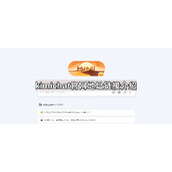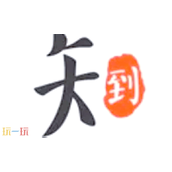c#中IEnumerable简单实现及 yield return 语法糖
c#中IEnumerable简介及简单实现
IEnumerable这个接口在MSDN上是这么说的,它是一个公开枚举数,该枚举数支持在非泛型集合上进行简单的迭代。换句话说,对于所有数组的遍历,都来自IEnumerable,那么我们就可以利用这个特性,来定义一个能够遍历字符串的通用方法.
下面先贴出code.
| 代码如下 | 复制代码 |
| using System; using System.Collections.Generic; using System.Linq; using System.Text; using System.Threading.Tasks; using System.Collections; namespace mycs { class Program { static void Main(string[] args) { charlist mycharlist = new charlist("hello world"); foreach (var c in mycharlist) { Console.Write(c); } Console.ReadLine(); } } class charlist : IEnumerable { public string TargetStr { get; set; } public charlist(string str) { this.TargetStr = str; } public IEnumerator GetEnumerator() { //c# 1.0 return new CharIterator(this.TargetStr); //c# 2.0 /* for (int index = this.TargetStr.Length; index > 0;index-- ) { yield return this.TargetStr[index - 1]; } */ } } class CharIterator : IEnumerator { public string TargetStr { get; set; } public int position { get; set; } public CharIterator(string targetStr) { this.TargetStr = targetStr; this.position = this.TargetStr.Length; } public object Current { get { if (this.position==-1||this.position==this.TargetStr.Length) { throw new InvalidOperationException(); } return this.TargetStr[this.position]; } } public bool MoveNext() { if (this.position!=-1) { this.position--; } return this.position > -1; } public void Reset() { this.position = this.TargetStr.Length; } } } | |
在上面的例子c# 1.0中,CharIterator就是迭代器的实现,position字段存储当前的迭代位置,通过Current属性可以得到当前迭代位置的元素,MoveNext方法用于更新迭代位置,并且查看下一个迭代位置是不是有效的。
当我们通过VS单步调试下面语句的时候
foreach (var c in charList)
代码首先执行到foreach语句的charList处获得迭代器CharIterator的实例,然后代码执行到in会调用迭代器的MoveNext方法,最后变量c会得到迭代器Current属性的值;前面的步骤结束后,会开始一轮新的循环,调用MoveNext方法,获取Current属性的值。
通过C# 1.0中迭代器的代码看到,要实现一个迭代器就要实现IEnumerator接口,然后实现IEnumerator接口中的MoveNext、Reset方法和Current属性。
在C# 2.0中可以直接使用yield语句来简化迭代器的实现。
如上面public IEnumerator GetEnumerator()方法中注释掉的部分.
通过上面的代码可以看到,通过使用yield return语句,我们可以替换掉整个CharIterator类。
yield return语句就是告诉编译器,要实现一个迭代器块。如果GetEnumerator方法的返回类型是非泛型接口,那么迭代器块的生成类型(yield type)是object,否则就是泛型接口的类型参数。
C#中yield return 语法糖
public IEnumerator GetEnumerator()
{
for (int index = this.TargetStr.Length; index > 0;index-- )
{
yield return this.TargetStr[index - 1];
}
*/
}
迭代器yield return的语法就是告诉编译器.这个方法不是一个简单的方法.而是实现了一个迭代器块的方法.这个方法被声明为返回IEnumerator的一个接口.所以就只能使用迭代器来实现返回类型为IEnumerable,IEnumerator或泛型等价物的方法.如果方法声明的返回类型是非泛型接口,那么迭代器的生成类型是object,否则就是泛型接口的参数类型.例如,如果方法声明为返回值为IEnumerator,那么就会得到string类型的生成类型.
来看看下面的这段代码
public static IEnumerable
ReadLines(string filename)
{
using (TextReader reader = File.OpenText(filename))
{
string line;
while ((line=reader.ReadLine()) != null)
{
yield return line;
}
}
}可以看到,上面这段代码实现了对于一个文件的遍历读取每一行.
在foreach中释放迭代器非常重要.它可以确保阅读器被清理干净.迭代器方法中的using语句扮演了try/finally块.在达到文件末尾或者中途调用IEnumerable的Dispose方法,将进入finally块来释放迭代器.
相关文章
精彩推荐
-
 下载
下载疯狂医院达什医生中文版(Crazy Hospital)
模拟经营 疯狂医院达什医生中文版(Crazy Hospital)疯狂医院达什医生最新版是一款医院模拟经营类游戏,逼真的场景画
-
 下载
下载宝宝庄园官方版
模拟经营 宝宝庄园官方版宝宝庄园官方版是一款超级经典好玩的模拟经营类型的手游,这个游
-
 下载
下载桃源记官方正版
模拟经营 桃源记官方正版桃源记是一款休闲娱乐类的水墨手绘风格打造的模拟经营手游。玩家
-
 下载
下载长途巴士模拟器手机版
模拟经营 长途巴士模拟器手机版长途巴士模拟器汉化版是一款十分比真好玩的大巴车模拟驾驶运营类
-
 下载
下载房东模拟器最新版2024
模拟经营 房东模拟器最新版2024房东模拟器中文版是一个超级有趣的模拟经营类型的手游,这个游戏















